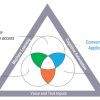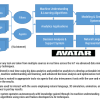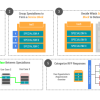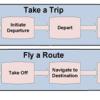Business Transformation Requires Transformational Leaders
Leadership and teaming skills are front and center in times of rapid change. Meet today’s constant disruption head on with expert guidance in leadership, business strategy, transformation, and innovation. Whether the disruption du jour is a digitally-driven upending of traditional business models, the pandemic-driven end to business as usual, or the change-driven challenge of staffing that meets your transformation plans—you’ll be prepared with cutting edge techniques and expert knowledge that enable strategic leadership.
Recently Published
Teaching Computers How to Learn
In her article, Karolina Marzantowicz explores how computers learn. It turns out that teaching a cognitive application is rather like mentoring a new associate: setting tests, offering hints, and doling out lots of reinforcement as the application learns more and provides better answers. She discusses some of the different techniques required for acquiring basic knowledge, for learning a natural language, and for learning to make sense of images.
Aravind Ajad Yarra gives us his own description of the history of natural language interface development and goes on to consider what kind of architecture is required to support conversational interfaces. Without getting into coding details, Yarra provides a good overview of the challenges developers will face as they seek to develop conversational interfaces for business applications.
In recent years, those using AI to improve software development have focused on creating specialized tools that can aid developers in specific tasks. By combining software development capabilities with an ability to dialog with developers, the new tools are making the development process easier. Indeed, author Donald Reifer believes that in five years’ time, cognitive computing approaches will enable machines to autonomously perform many of the intellectual tasks of software development, and he offers three scenarios for which this might be the case: software requirements definition, test automation, and “roll your own release.”
This issue of Cutter Business Technology Journal is focused on cognitive computing. Cognitive computing is a term that is similar to, but currently more popular than, artificial intelligence (AI), and it refers to all those innovations in computing that are being driven by various types of AI research. Now is the time to start thinking about how to transform your organization with cognitive computing.
The Cloud Buyer’s Advantage
Cloud is on everyone’s mind. If you are in the throes of cloud procurement — facing challenges around cost reduction, centralized billing, and agility — then buying indirect offers significant advantages. The objectives of unlocking lower pricing to reduce costs and negotiating suitable procurement terms to improve agility are best achieved by buying cloud indirectly. It is the role of cloud brokers, resellers, and distributors to help customers get the best deal. To negotiate preferred terms as an enterprise cloud buyer, consider buying through an IT distributor or reseller. As we explore in this Executive Update, it is time to start buying cloud as an organization, not as an individual. That means taking a long-term view of how you continually monitor, optimize, and manage the procurement of cloud infrastructure.
In keeping with digital transformation’s principle of viewing a business holistically across a variety of contexts, viewing how a business delivers stakeholder value is a key element of this holistic perspective. Stakeholders are first and foremost customers, but they also include business partners, other third parties, and internal resources. The value stream provides a nontechnical, value-driven, end-to-end perspective that includes all of the enabling capabilities and participating stakeholders required to deliver the value proposition for that value stream.
One of the top areas that business architecture teams struggle with is articulating the value of business architecture. Their challenges have less to do with building the business architecture blueprint or even applying it to various scenarios, and more to do with getting the buy-in to be able to do so in the first place. This is partially due to circumstances related to the discipline and its increasing maturity, but also related to the way we communicate.
The Pride Tax
Those of us who have been in IT long enough have all witnessed it: the pride tax.
What is the pride tax? It is the amount of money organizations overpay for bad technology decisions. The pride tax takes many forms: runaway enterprise systems projects that persist because leaders don’t want to admit mistakes, choosing wrong vendors based on personal or short-sighted reasons, getting too attached to a set of tools or architectures then defending them at all costs, or even making strategic errors based on unquestioned acceptance of (so-called) best practices or the status quo.


















